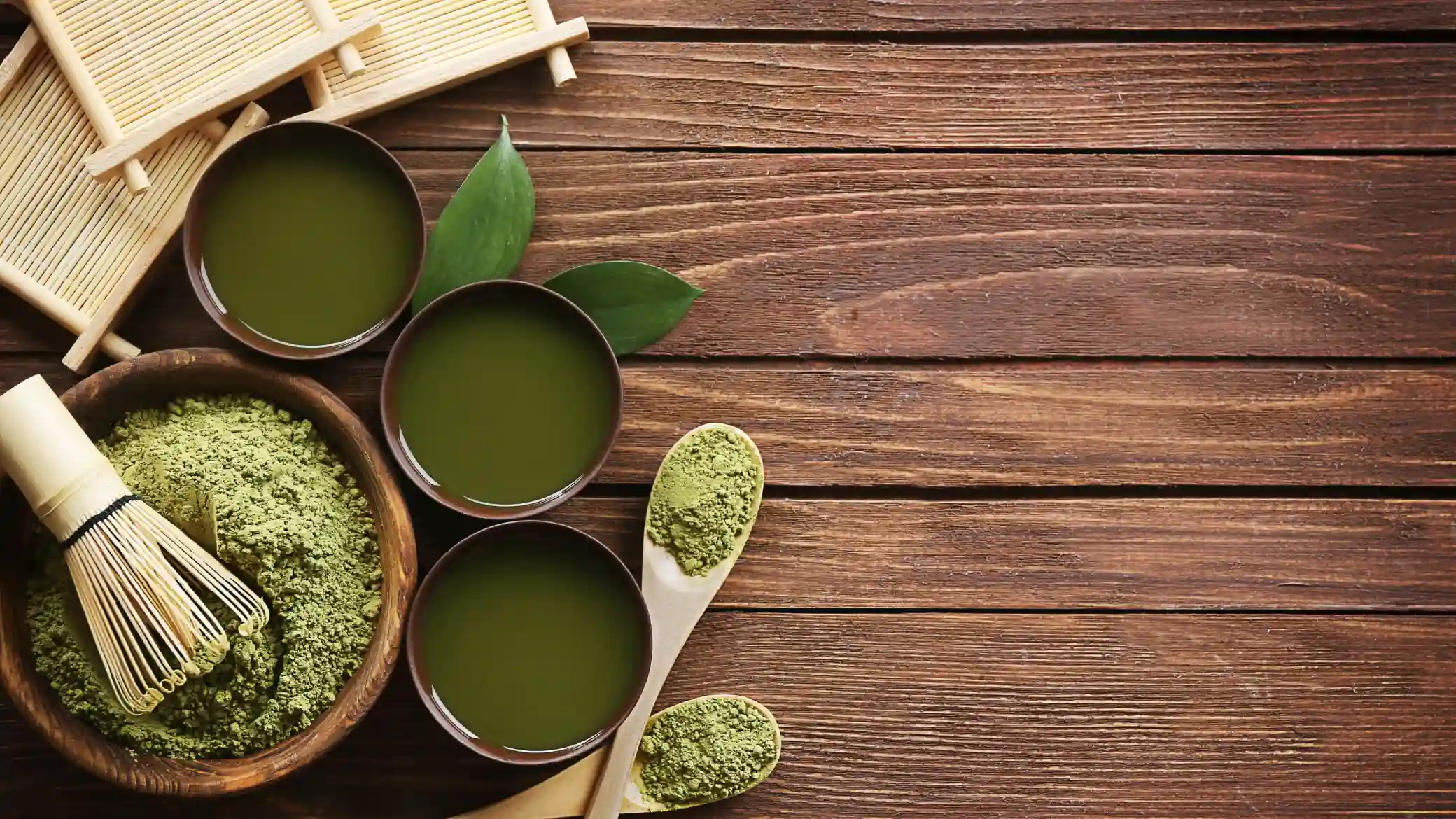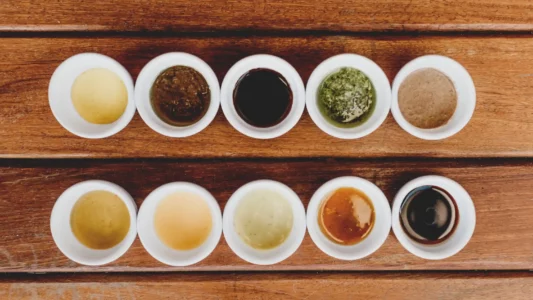At Burman’s Health Shop, we’re seeing an increasing fascination with Kava, an exotic drink celebrated for its tranquilizing qualities and distinct flavor. Originating from the Piper methysticum plant’s root, Kava has been a cultural cornerstone across Pacific Island communities for generations, valued for its calming effects and significance in social rituals. Its allure has recently spread to Western societies, particularly among those in search of natural stress and anxiety solutions.
This article aims to unravel the complexities of Kava’s flavor. The taste profile of Kava is shaped by various elements such as its geographic origin, specific strain, and the methods used in its preparation. We’re excited to explore these factors with you, enhancing your understanding and enjoyment of Kava’s unique taste.
Related: Which CBD Oil Is Best for High Blood Pressure?
Basic Flavor Profile of Kava
Kava is often described as having a primarily earthy taste. This fundamental characteristic sets it apart from many common beverages. The flavor of Kava can be akin to a strong herbal tea or a mild coffee but with a distinct earthiness unique to Kava.
The specific strain of Kava plays a crucial role in its flavor profile. Different strains from various Pacific Islands can yield subtle differences in taste. Additionally, the preparation method can significantly influence its taste, whether traditionally prepared or made using modern techniques. Lastly, the freshness and quality of the Kava root also contribute to variations in its flavor.
Related: What is Hemp-Derived Delta 9? Buyer’s Guide
Texture and Mouthfeel of Kava
One of the most notable aspects of drinking Kava is its distinctive mouthfeel. It’s often thicker than water and can be described as ‘chalky’ or ‘grainy,’ quite different from other traditional beverages. How Kava is prepared, especially the grinding and mixing process, affects its texture significantly.
Kavalactones, the active compounds in Kava, are vital in its mouthfeel. These compounds can create a numbing sensation on the tongue, a characteristic often noted by first-time drinkers. This sensation is a hallmark of authentic Kava and contributes to its overall experience.

Ready to dive into the world of Kava and its unique flavor? Explore and Shop our extensive collection at Burman’s Health Shop and find your perfect Kava blend today!
The Aroma of Kava: An Integral Part of its Taste
The aroma of Kava is an essential component of its taste experience. Kava’s scent is often earthy and slightly pungent, which can surprise new consumers. The aroma plays a significant role in shaping the perception of its taste.
Different types of Kava can exhibit variations in aroma, contributing to the diversity of the Kava drinking experience. Enhancing Kava’s aroma during preparation, such as through specific steeping techniques, can enrich the flavor.
The Aftertaste of Kava
Kava’s aftertaste is as distinctive as its initial flavor. It tends to linger longer than the initial taste and can be more potent. The aftertaste’s strength and duration can vary based on the Kava strain and how it’s prepared.
One can try different preparation methods or pair Kava with specific foods to manage or alter the aftertaste. Experimenting with these variables can lead to a more enjoyable Kava experience.
Related: How to Decarb Weed [Decarboxylation Guide]
Role of Kavalactones in Kava’s Taste
At Burman’s Health Shop, we understand that the unique taste of Kava primarily comes from a group of compounds known as kavalactones. These compounds are central to the Kava experience regarding flavor and effects. Kavalactones contribute to the earthy and slightly pungent taste of Kava. The specific blend and concentration of kavalactones can vary from one Kava strain to another, resulting in subtle differences in taste across different types of Kava.
In addition to influencing the taste, kavalactones are responsible for Kava’s calming and therapeutic effects. This creates a balance between enjoying the taste of Kava and appreciating its soothing properties. Understanding the role of kavalactones helps in appreciating how the taste of Kava is intertwined with its effects.
Influence of Brewing Methods on Kava’s Taste
The method used to brew Kava can significantly affect its taste. Traditional brewing methods, which involve steeping the ground Kava root in cold water, yield a beverage with a robust, earthy flavor. On the other hand, modern techniques, which might involve using hot water or various mechanical means of extraction, can alter the taste profile.
The temperature of the water used in brewing is crucial. Traditionally, cold water is preferred as it extracts the kavalactones without releasing some of the more bitter compounds. The steeping time also plays a critical role – a longer steep can intensify the flavor but might also bring out more bitterness. For those new to Kava, we recommend experimenting with brewing times to find a balance that suits your taste preferences.
Pairing Foods and Flavors with Kava
Pairing Kava with the right foods and flavors can enhance its taste and make for a more enjoyable experience. Foods that complement Kava’s earthiness, such as salty snacks or sweet fruits, can balance its strong taste. At Burman’s Health Shop, many customers enjoy Kava with Lion’s mane. Combining the relaxing effects of kava with the milder, more stimulating effects of lion’s mane can be excellent for creative euphoria.
Regarding cultural practices, Kava is often consumed during social gatherings, and pairing it with light snacks is common. If you’re new to Kava, experimenting with different pairings can be a delightful way to adjust to its unique taste.
Acquired Taste: Getting Used to Kava
Kava is often considered an acquired taste. First-time drinkers might find its earthy, peppery flavor challenging. However, like many unique flavors, it’s something one can get used to over time. Regular Kava users often start to appreciate the taste, associating it with the relaxing effects of the drink.
We recommend starting with smaller amounts and gradually increasing the quantity for those new to Kava. Mixing Kava with flavored beverages or trying different strains can also help adapt it to its taste. Remember, an open mind is vital to acquiring a taste for Kava.

Uncover the distinct taste of Kava for yourself. Explore and Shop at Burman’s Health Shop and start your journey with our premium Kava selections.
Unique Flavor of Kava
The taste of Kava is as unique as its cultural heritage. From its earthy flavor profile influenced by kavalactones to the various brewing methods that affect its taste, Kava offers a complex and engaging experience. While it may be an acquired taste, embracing its uniqueness is part of the journey.
We invite you to delve into the diverse world of Kava at Burman’s Health Shop. Start an exploration adventure by trying different brewing methods and combining Kava with various foods to find your perfect flavor.
Remember, the true spirit of Kava extends beyond its taste – it’s a celebration of the deep cultural heritage and history embodied in every sip of this ancient beverage. Explore with us at Burman’s Health Shop and enhance your knowledge of this captivating drink with our premium Kava selections.
Disclaimer:
The statements made regarding these products have not been evaluated by the Food and Drug Administration. The efficacy of these products has not been confirmed by FDA-approved research. These products are not intended to diagnose, treat, cure or prevent any disease. All information presented here is not meant as a substitute for or alternative to information from health care practitioners. Please consult your health care professional about potential interactions or other possible complications before using any product. The Federal Food, Drug and Cosmetic Act requires this notice.




